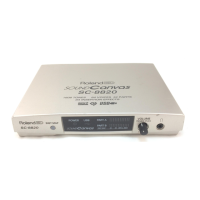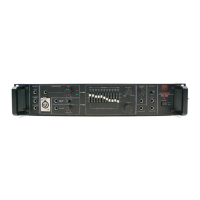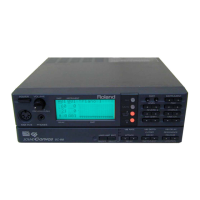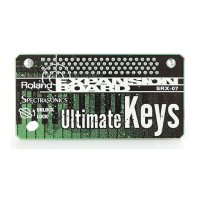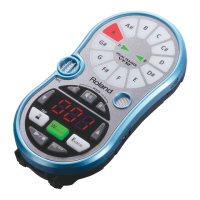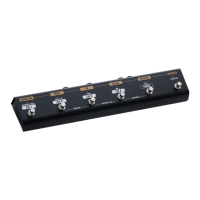The last page as you scroll down, has the Sampling Trigger parameters. If you set the trigger type to
Auto, the following parameters need to be set:
Level – This sets an audio threshold to initiate sampling. You will need to set a threshold level for the
sampler to know when to start sampling. (Recommended range between 5–10)
Pre-Trigger – Allows you to record signals before the threshold is reached. (Recommended range
.01–.02)
Once you’ve set-up your sampling configuration you are ready to sample. (See steps 1–4 above).
5) Press F1-New. You will see a temporary name appear at the top of the page. 1) New:
Unnamed. You can name the sample by moving the cursor and highlighting it and press-
ing S2., which places you on the ASCII keyboard page. Move the cursor to the letter you
want and press the S1 button to select it.
6) Press F3-MonOn to monitor the incoming audio signal.
7) Press F3-Ready. This takes you to the Sampling page.
8) To begin sampling, press F1-Start. A message will come-up saying Start Cancel = Exit.
Play the input source that you are sampling. You’ll see the box on the left fill up, as the
sampling is going on. After you record the sample, press Stop to stop the sampling
process. You will see arrows turning around saying “Now Working” after the sample is
taken. When this is done, a waveform of the sample will be displayed. You should be able
to play the keyboard or push the Preview button and hear the sample on the key that you
set as the original key. If you are satisfied with the results, press Exit. If not, press F2-
Retry.
9) You’ll then come to the Split page. This page is for setting the key or keys that you want the
sample assigned to. Press Shift and press F2 < Kbd which will set the range for 88 notes.
You won’t hear the sample until you press the F3-Set button, which sets the key range
you’ve determined. At this point, you’ve created a Sample, a Partial, and a Patch. You can
exit to the Performance Play page and you’ll see your sample assigned to the first Patch,
with a temporary name ie: NEW Unnamed, or whatever name you’ve given the sample.
Quick Editing
With the Quick Editing feature you can change some basic parameters of the sounds in your
Performance.
1) From the Performance Play page, press Shift then Jump, then scroll down with the cur-
sor arrow keys to 17) Quick Edit.
2) Press S1 and you will come to the Quick Edit page. You can determine which Partial you
are editing by turning your data dial until you find the Partial you want to edit. Move your
cursor to each of the following parameters and highlight the parameter you want to
change. You change the values with the Value/Menu knob.
Pitch
1) KF, determines the keyfollow parameters.
2) Cor, adjusts the coarse tuning of the sample.
3) Fin, adjusts the fine tuning of the sample.
© 1995 Roland Corporation U.S. SN29 S-760 Supplemental Manual Page 8 of 17

